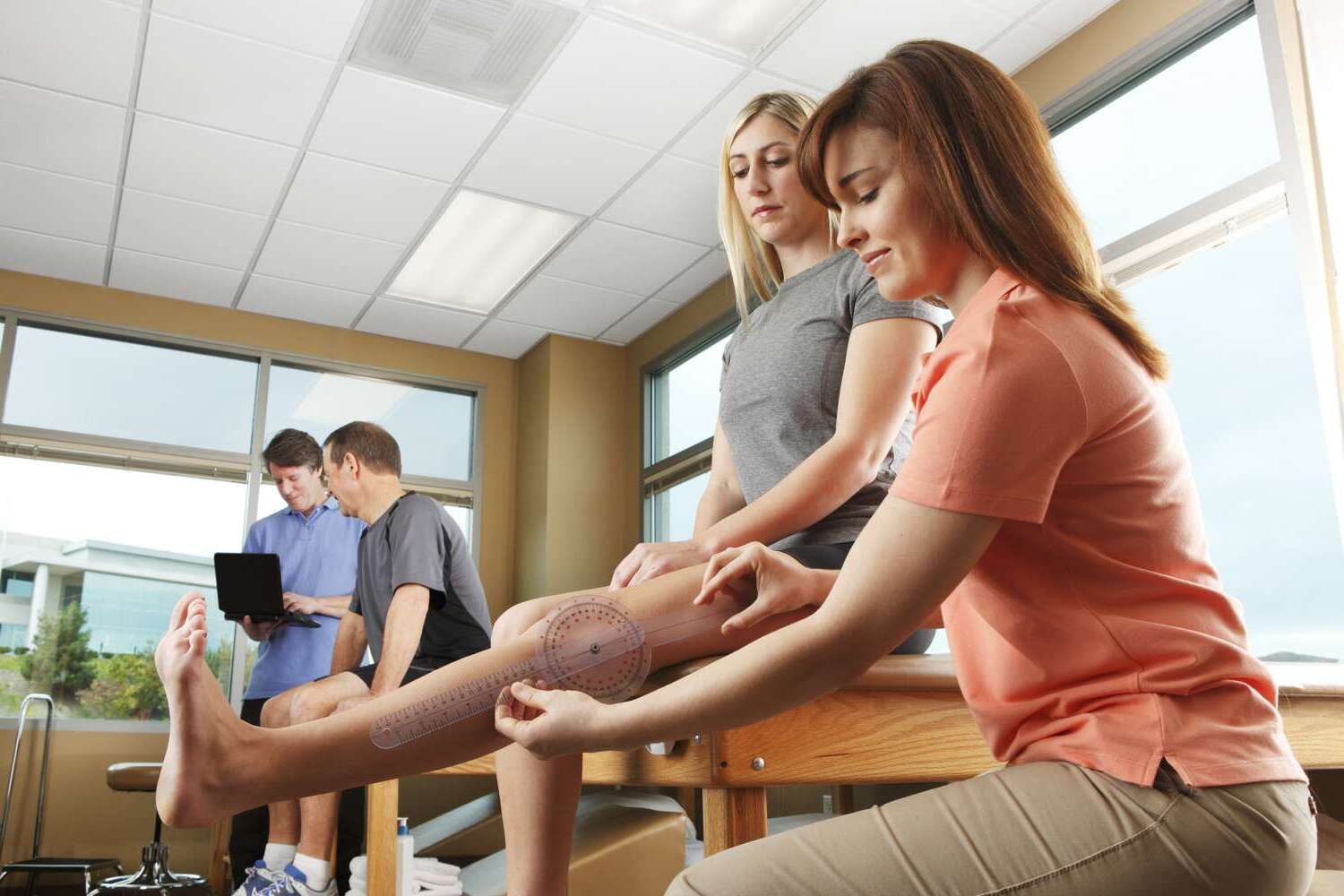
What is Patellar Subluxation Syndrome? Patellar Subluxation Syndrome, often called patellar instability, happens when the kneecap (patella) partially dislocates from its normal spot in the femoral trochlea. This condition can be as disabling as a full dislocation and is more common than many realize. Symptoms include knee buckling, pain, and swelling, making everyday activities challenging. Causes range from anatomical issues like trochlear dysplasia to muscle imbalances. Athletes, especially those in sports involving running and jumping, are at higher risk. Treatment options vary from physical therapy and bracing to surgical interventions for severe cases. Understanding this condition is crucial for effective management and recovery.
Key Takeaways:
- Patellar subluxation syndrome causes knee cap instability, leading to pain, swelling, and limited mobility. Athletes are at higher risk, but with proper treatment, many can return to their activities.
- An interprofessional team approach involving orthopedic surgeons, physical therapists, and athletic trainers is crucial for effective management. Surgical options and activity modification can help reduce recurrent episodes.
Understanding Patellar Subluxation Syndrome
Patellar subluxation syndrome, also known as patellar instability, involves the kneecap slipping out of its normal position. This condition can be quite disabling and is more common than complete dislocation.
-
Definition and Prevalence: Patellar subluxation syndrome occurs when the kneecap slides out of its normal position in the femoral trochlea. It's more frequent than patellar dislocation and can be equally disabling.
-
Symptoms: Common symptoms include knee buckling, where the knee can't support weight, and the kneecap slipping to one side. Other signs are knee catching during movement, front knee pain that worsens with activity, pain when sitting, stiffness, creaking or cracking sounds, and swelling.
Causes and Risk Factors
Understanding the causes and risk factors can help in managing and preventing patellar subluxation syndrome.
-
Causes: Causes can be anatomical, like incorrect articulation of the femoral groove with the patella, trochlear dysplasia, or patella alta. Non-anatomical causes include soft-tissue abnormalities like a torn medial patellofemoral ligament (MPFL) or a weakened vastus medialis obliquus (VMO) muscle.
-
Risk Factors: This condition can affect anyone but is more common in sports involving running and jumping, like soccer, basketball, and volleyball. Non-athletes can also be affected due to repetitive stress and overuse of the knee joint.
-
Gender and Age: Historically, it was thought to occur more in women due to genu valgum (knock-knees) and lax ligaments. Current data show it affects both men and women equally, especially in athletic populations.
Mechanism of Injury and Muscle Imbalances
The way the injury happens and muscle imbalances play a significant role in patellar subluxation syndrome.
-
Mechanism of Injury: This injury often occurs due to repetitive stress and overuse of the knee joint, leading to muscle imbalances and ligament laxity. Direct blows to the front or side of the knee can also cause the kneecap to slide out of position.
-
Muscle Imbalances: Imbalances, especially between the quadriceps and hamstrings, can contribute to patellar subluxation. Weakness in the VMO muscle is a common factor as it helps stabilize the patella against lateral forces.
Treatment Options
Various treatment options are available, ranging from physical therapy to surgical interventions.
-
Physical Therapy: Physical therapy focuses on muscle strengthening, particularly of the VMO muscle, and proprioceptive exercises to improve knee stability and function.
-
Bracing and Taping: Techniques like bracing and taping can stabilize the patella and prevent further subluxations. These methods can also serve as diagnostic tools for hidden patellofemoral instability.
-
Surgical Treatment: Surgery may be necessary for cases unresponsive to conservative measures. Options include MPFL reconstruction, sulcus-deepening trochleoplasty, and other procedures to correct anatomical defects.
-
Conservative Treatment: This typically involves a multimodal approach including behavioral education, physical therapy, braces, weight reduction, and pain medication. The goal is to address muscle imbalances and reduce stress on the patellofemoral joint.
Impact on Daily Life and Pain Management
Patellar subluxation syndrome can significantly affect daily activities and managing pain is crucial.
-
Recurrent Subluxations: Recurrent subluxations are common and can be triggered by muscle imbalances, ligament laxity, and anatomical abnormalities.
-
Impact on Daily Activities: This condition can significantly impact daily activities, especially those involving running, jumping, or high-impact movements. Patients may experience pain, swelling, and limited range of motion, making routine tasks challenging.
-
Pain Management: Managing pain is crucial and can include pain medication, ice therapy, and rest to control symptoms and prevent further injury.
Athletes and Complications
Athletes are at higher risk, and untreated cases can lead to complications.
-
Athletic Participation: Athletes face a higher risk due to repetitive stress and high-impact movements in their sports. With proper treatment and rehabilitation, many can return to their activities.
-
Complications: Untreated or recurrent patellar subluxation can lead to chronic pain, limited mobility, and increased risk of developing osteoarthritis in the patellofemoral joint.
Diagnosis and Interprofessional Approach
Accurate diagnosis and a team approach are essential for effective management.
-
Diagnosis: Diagnosis involves clinical examination, imaging studies (like X-rays and MRI), and physical therapy assessments to evaluate muscle strength and joint stability.
-
Interprofessional Team Approach: Managing this condition requires collaboration between orthopedic surgeons, physical therapists, athletic trainers, and other healthcare professionals to provide comprehensive care.
Age-Specific Considerations and Recurrence Rates
Different age groups may require different treatment approaches, and recurrence rates can be high.
-
Age-Specific Considerations: In children and adolescents, early surgical intervention may be necessary to correct anatomical defects before epiphyseal closure. In adults, surgical options like MPFL reconstruction or trochleoplasty may be more effective for recurrent cases.
-
Recurrence Rates: Recurrence rates can be high, ranging from 15% to 60% after a first-time dislocation. Patients with a history of two or more dislocations have a 50% chance of recurrent episodes.
Surgical Options and Activity Modification
Surgical options and modifying activities can help manage patellar subluxation syndrome.
-
MPFL Reconstruction: MPFL reconstruction is a common surgical procedure for treating recurrent patellar dislocations and subluxations. It aims to restore the medial restraints of the patella, reducing further instability.
-
Trochleoplasty: Trochleoplasty is another surgical option, especially for significant trochlear dysplasia. This procedure deepens the trochlear groove to improve patellar tracking and stability.
-
Activity Modification: Modifying activities is essential. Avoiding activities that worsen symptoms and incorporating exercises that strengthen the VMO muscle and improve knee stability can reduce subluxations.
Orthotic Devices and Rehabilitation
Orthotic devices and a structured rehabilitation program are crucial for recovery.
-
Orthotic Devices: Patellar braces can provide additional support and stability, helping to prevent further subluxations. These devices are particularly useful for athletes needing a quick return to sports.
-
Rehabilitation and Recovery: A well-structured rehabilitation program that includes strengthening exercises, proprioceptive training, and functional activities can help patients regain full function and reduce the risk of future episodes.
Key Takeaways on Patellar Subluxation Syndrome
Patellar subluxation syndrome is a tricky condition where the kneecap keeps slipping out of place. It can cause pain, swelling, and even make daily activities tough. This issue often stems from muscle imbalances, ligament problems, or anatomical quirks. Athletes, especially those in high-impact sports, are more prone to it. Treatment usually starts with physical therapy to strengthen muscles and improve knee stability. Braces and taping can help too. In stubborn cases, surgery might be needed to fix the underlying problems. Early diagnosis and a team approach involving doctors, therapists, and trainers are crucial. Ignoring it can lead to chronic pain and arthritis. With the right care, many people can get back to their normal activities and sports. Understanding the causes, symptoms, and treatments is key to managing this condition effectively.
Frequently Asked Questions
Was this page helpful?
Our commitment to delivering trustworthy and engaging content is at the heart of what we do. Each fact on our site is contributed by real users like you, bringing a wealth of diverse insights and information. To ensure the highest standards of accuracy and reliability, our dedicated editors meticulously review each submission. This process guarantees that the facts we share are not only fascinating but also credible. Trust in our commitment to quality and authenticity as you explore and learn with us.


